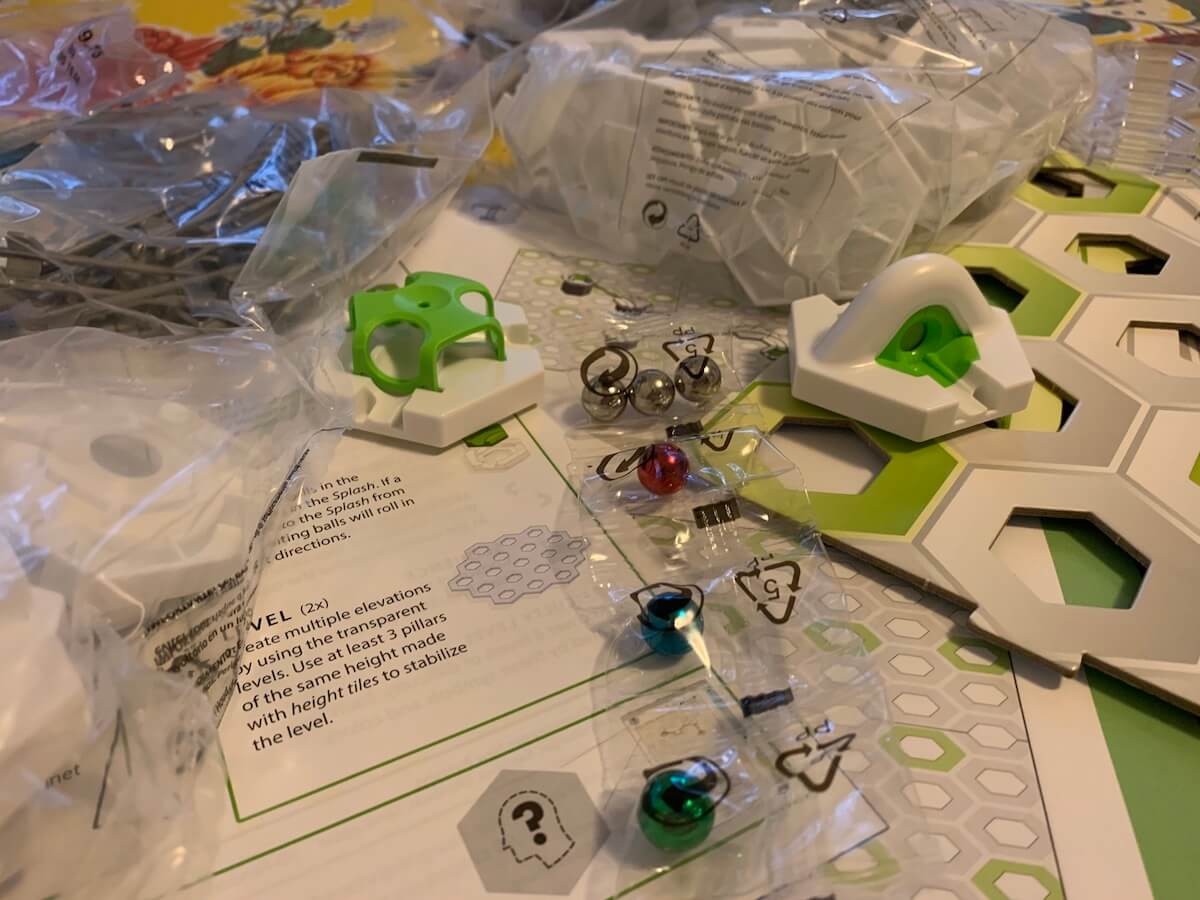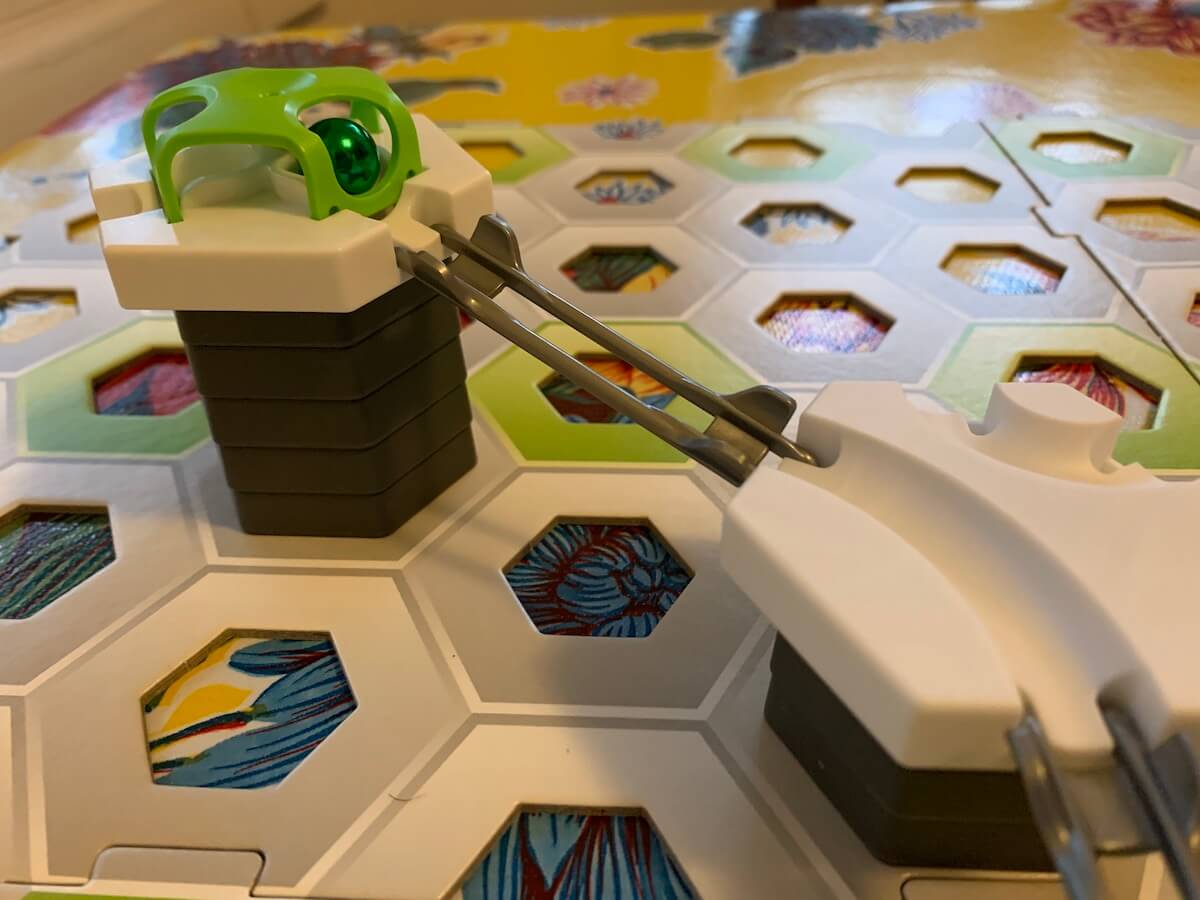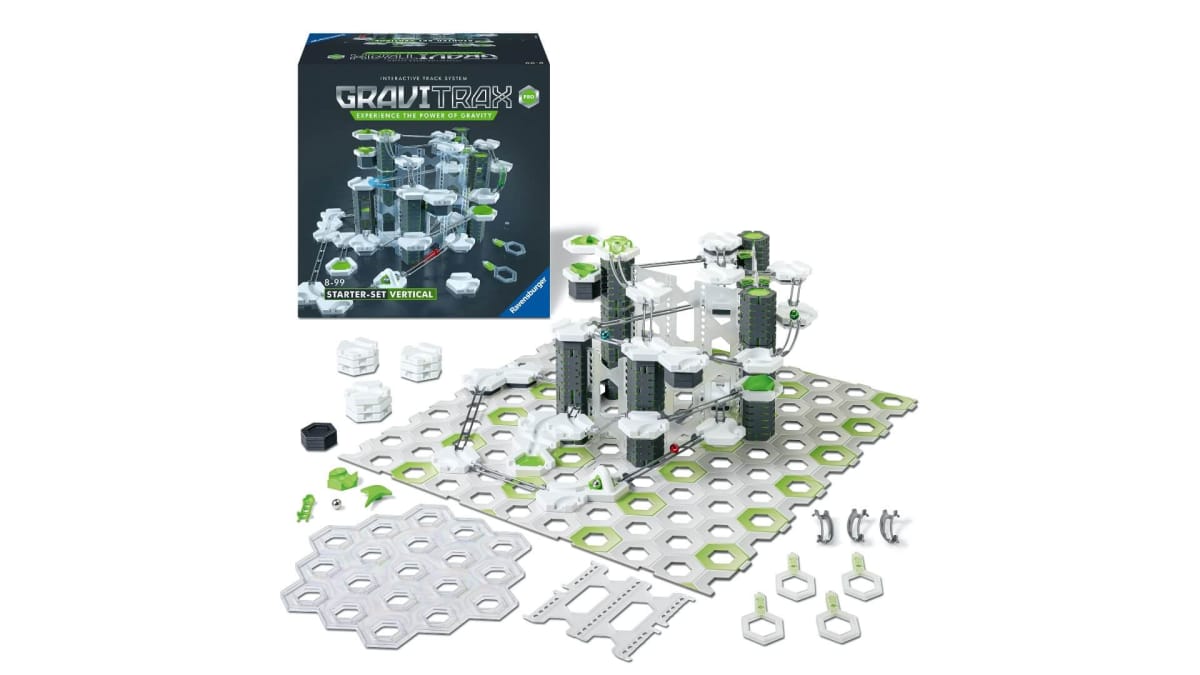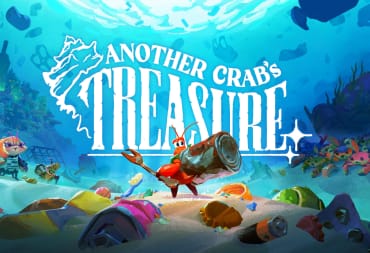The gatecrashes open and the contestants burst out onto the track. Blue winds and weaves around hairpin turns before plummeting down and being shot off toward the finish line. Red barrels downhill before slamming against the magnetic launcher, using kinetic energy and magnetism to propel its teammate uphill once again. Meanwhile, Green crisscrosses paths with Red and Blue, switching tracks and jumping toward the advantage. It's neck and neck until finally, with a thrilling dash to the finish line, Red nabs the victory. Exciting, isn't it? And to think, we're just talking marbles here. But this is the wild world of GraviTrax and GraviTrax Pro, an "interactive track system" by Ravensburger Games.
I have to admit, when a big bundle of GraviTrax arrived at my doorstep courtesy of Ravensburger Games, I really didn't know what to expect. Not technically a board game, but still firmly in a hobby space, it was hard to tell how to approach GraviTrax. Never one to overthink these things, I dove right into the Starter Set, and so begins a newfound love affair with building tracks and racing marbles (though, to be clear, GraviTrax doesn't call them marbles, they're amazingly called "gravity spheres").

GraviTrax is, at its core, a system of tools designed to create tracks upon which you can roll or race marbles. The Starter Set box is full of over 100 pieces of components, including plastic tracks, rounded curves, junctions, switches, a 3-in-1 tile for merging lanes, a launchpad to send the marbles out onto the tracks, a "magnetic cannon" and more. The entire system is built on top of a cardboard hexagonal board which, after punching the holes out of, fits all of the varied pieces nicely.
In the expansion sets, of which there are multitudes, players can further up the complexity of their constructions and add all sorts of flare to their tracks with the addition of "dippers," "flippers," "scoops," and "ziplines" just to name a few. The smaller expansions we received, the "Pro Splitter" and the "Vertical Mixer," are designed to change the course of a given marble by sending it on a new path. And the vertical expansions we received add serious height to a track. By raising the tracks on risers and floating platforms, with these vertical expansions, I was able to build faster tracks (due to the steep downward incline) and more involved tracks. All in all, it's an impressive collection of bits and bobs that combine to give each track build its own distinct personality.
Putting a track together is a seamless process. The core idea behind the system is embodied in their slogan "Experience the power of gravity!", meaning you start placing balls in a launcher higher up, and send them slowly down via twists, turns, and ramps until they reach the bottom. That sounds simple, spheres go on tracks downhill. But when you add in special features like the clever "magnetic cannon" which converts kinetic energy through magnetism (I think, the science, though approachable, is a bit beyond me on this one) you end up with enough force to send your spheres flying uphill again.
I got used to the system by building each of the suggested tracks in the guide book included in the starter sets. These pre-designed tracks rise in difficulty as you work your way through the guide, but by "difficulty" all we're really talking about is the number of pieces used. Where the guide book really shines, however, is in a series of puzzles at the back of the book designed to test your knowledge about the general physics of the system and the way all the pieces work together. For instance, you'll have a puzzle that lays out the general layout of a track, but doesn't tell you where the all-important risers should go, or in what quantity they should appear. As mentioned above, gravity is so crucial to GraviTrax (it's right there in the name, isn't it?) that one ill-placed riser could send your spheres flying off the track (or, in the opposite direction, barely rolling to the finish line). Figuring out these small puzzles was challenging, but even further helped cement my comfort with the system.

The Bottom Line
While not necessarily a game, per se, the GraviTrax system is a lot of fun to tinker with and would find a happy home on many tabletop board gamers' shelves. GraviTrax also touts itself as being a useful tool for teaching STEM concepts to kids, and I could absolutely see parents and teachers using this to help their kids wrap their heads around heavy topics like kinetic energy. As for me, the full-grown adult without kids who doesn't consider himself a "science guy," I was utterly charmed by GraviTrax, and can't wait to keep building.
Get This Game If:
- You like tinkering with tactile objects
- You're interested in exploring (or teaching others) some hands-on physics lessons
- You like the thrill of building something and watching it either work or fall apart
Avoid This Game If:
- You're looking for a true "board game"
- You get flustered by an overabundance of choice (there are a lot of pieces to use in your track creations)
The Gravitrax sets used in this review were provided by Ravensburger Games.
Review Summary
Have a tip, or want to point out something we missed? Leave a Comment or e-mail us at tips@techraptor.net











